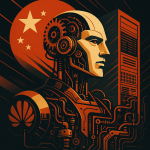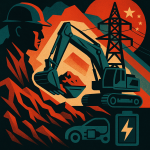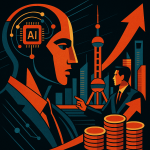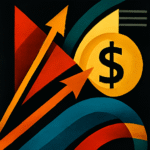Key Points
- Massive AI and Supercomputing Investment: Tesla plans to spend $8 billion USD in capital expenditures in 2025, primarily on AI development including self-developed inference computers, vehicle sensors, and the Dojo Supercomputer, with its Cortex computing center nearing 100,000 GPUs.
- Financial Concerns and Warnings: Wells Fargo issued a “sell” rating on Tesla stock with a target price of $120 USD, citing “deteriorating fundamentals” and a potential for negative free cash flow for the first time since 2018.
- Significant Financial Decline in Q1 2025: Tesla’s Q1 revenue dropped 9% year-over-year to $19.335 billion USD, and shareholder profit plummeted by 71% to $409 million USD.
- Bet on Robotaxi: Amid financial pressures, Tesla is heavily focused on its Robotaxi service, with FSD V13.3 set to launch with the service and FSD V14, expected in H2 2025, aimed at commercialization.

Tesla’s (Tèsīlā 特斯拉) ambitious 2025 investment plan is making waves, earmarking over $8 billion USD for capital expenditures this fiscal year, even as a major bank sounds the alarm on its financial health.
It’s a classic high-stakes tech story: spend big to win the future, but navigate a rocky present.
Let’s break down what’s happening.
Tesla’s AI and Supercomputing Arms Race: The $8 Billion Plan
On June 21, Tesla dropped the news on its social media accounts, outlining a massive capital expenditure strategy.
To put it in perspective, the company has invested a staggering $44 billion USD (about ¥315.9 billion RMB) since its early days.
Just last year, their capital expenditure hit nearly $10 billion USD (about ¥71.8 billion RMB).
This year, they’re planning to pour another $8 billion USD (about ¥57.4 billion RMB) into the business.
So, where is all this cash going?
The answer is simple: AI.
During an employee meeting in March 2025, Elon Musk (Mǎsīkè 马斯克) revealed that Tesla’s 2024 AI investment alone was around $10 billion USD (around ¥71.8 billion RMB).
Nearly half of that was spent internally on developing the brains behind the operation.
Here’s a look at the core AI investment areas:
- Self-Developed AI Inference Computers: These are the custom chips that power the car’s intelligence. All current models run on the “AI 4” platform, with plans for AI 5, AI 6, and AI 7 on the horizon.
- Vehicle Sensors: The eyes and ears of every Tesla on the road.
- The Dojo Supercomputer: Tesla’s beast of a machine built specifically for training its autonomous driving models.
The scale of this operation is massive.
Musk stated that Tesla’s Cortex computing center, used for training its driving AI, is already home to over 50,000 GPUs.
It’s rapidly approaching the 100,000 GPU mark, which would place it among the top five most powerful supercomputing centers on the planet.
And it doesn’t stop there.
The next-generation Dojo 2 supercomputer is reportedly on its way, promising to be 10 times more powerful than the first version.

Resume Captain
Your AI Career Toolkit:
- AI Resume Optimization
- Custom Cover Letters
- LinkedIn Profile Boost
- Interview Question Prep
- Salary Negotiation Agent

The Red Flags: Financial Slump and a Stark Wall Street Warning
While Tesla is spending like a company building the future, its financial present is showing cracks.
Interestingly, the company has been consistently lowering its capital expenditure forecasts.
In April 2025, the estimate for the year was over $10 billion USD, which was already down from an earlier projection of over $11 billion USD.
Now, that number has been revised down again to $8 billion USD.
This could be a major signal of underlying cash flow issues.
And Wall Street has noticed.
On June 17, Wells Fargo (Fùguó Yínháng 富国银行) issued a serious warning to investors.
The bank’s report highlighted “deteriorating fundamentals” and warned that Tesla’s free cash flow might turn negative for the first time since 2018.
As a result, Wells Fargo reaffirmed its “sell” rating on Tesla stock with a target price of just $120 USD.
Analyst Colin Langan (Kēlín·Lángēn 柯林·兰根) predicts Tesla’s Q2 vehicle deliveries will be flat compared to a weak Q1, forecasting only 343,000 units—that’s 17% lower than the market consensus.
A look at the Q1 2025 report shows why analysts are concerned:
- Total Revenue: $19.335 billion USD (¥138.83 billion RMB), a 9% drop year-over-year.
- Net Profit: $420 million USD (¥3.02 billion RMB), a massive fall from $1.405 billion USD a year prior.
- Shareholder Profit: $409 million USD (¥2.94 billion RMB), a staggering 71% decline from the same period last year.
- Vehicle Production: 362,615 units, down 16% year-over-year.
- Vehicle Deliveries: 336,681 units, down 13% year-over-year.

The End Game: Can Robotaxi Save the Day?
- FSD V13.2: Already released, showing significant progress.
- FSD V13.3: Completed unsupervised internal factory testing. Set to launch with Robotaxi service.
- FSD V14: Expected H2 2025. Will focus on pedestrian path prediction and audio data processing. Seen as official start of Robotaxi commercialization.
With sales slowing and financials under pressure, Tesla is pinning its hopes on its next big thing: Robotaxi.
The company had plans to kick off a trial service as early as June 22 in Austin, Texas.
The initial test was slated to use about 10 Model Y SUVs, with a remote team monitoring for safety.
However, Musk has noted the date could shift due to safety priorities.
The technology underpinning this is Tesla’s Full Self-Driving (FSD) software, and its development is accelerating.
A report from Pacific Securities (Tàipíngyáng Zhèngquàn 太平洋证券) laid out the FSD roadmap:
- FSD V13.2: Already released, showing significant progress.
- FSD V13.3: Has completed unsupervised internal factory testing and is set to launch alongside the Robotaxi service.
- FSD V14: Expected in the second half of 2025, this version will focus on pedestrian path prediction and processing audio data. Its release is seen as the official start of Robotaxi commercialization.
Other financial institutions are also bullish on the long-term potential.
A report from CITIC Securities (Zhōngxìn Zhèngquàn 中信证券) noted that the pace of Robotaxi commercialization has sped up in 2025.
This is largely because Level 4 autonomous driving tech is maturing. They point to Waymo’s accident rate, which is already lower than that of human drivers, as a key proof point.
Long-term, the economics look promising.
Minsheng Securities (Mínshēng Zhèngquàn 民生证券) highlighted that Robotaxis could provide 24/7 service and slash labor costs.
However, they also add a dose of reality: initial deployments still require a safety driver or operator in the vehicle, so the full cost advantage isn’t there yet.
The real win comes when the technology is good enough to remove the human from the car entirely.
This is the high-stakes gamble for Tesla: can its massive investment in AI and supercomputing deliver a truly autonomous Robotaxi network before its cash reserves and investor patience run thin?
Ultimately, Tesla’s massive 2025 investment in AI represents a make-or-break bet on a fully autonomous future.

Find Top Talent on China's Leading Networks
- Post Across China's Job Sites from $299 / role, or
- Hire Our Recruiting Pros from $799 / role
- Qualified Candidate Bundles
- Lower Hiring Costs by 80%+
- Expert Team Since 2014
Your First Job Post





![Sunac China Liquidation Hearing Delayed: Deep Dive into Debt Restructuring & Creditor Pushback [FreshFromChina]](https://freshfromchina.com/wp-content/uploads/2025/05/Sunac_China_Liquidation_Hearing_Delayed__Deep_Dive_into_Debt_Restructuring___Creditor_Pushback____FreshFromChina-150x150.png)
